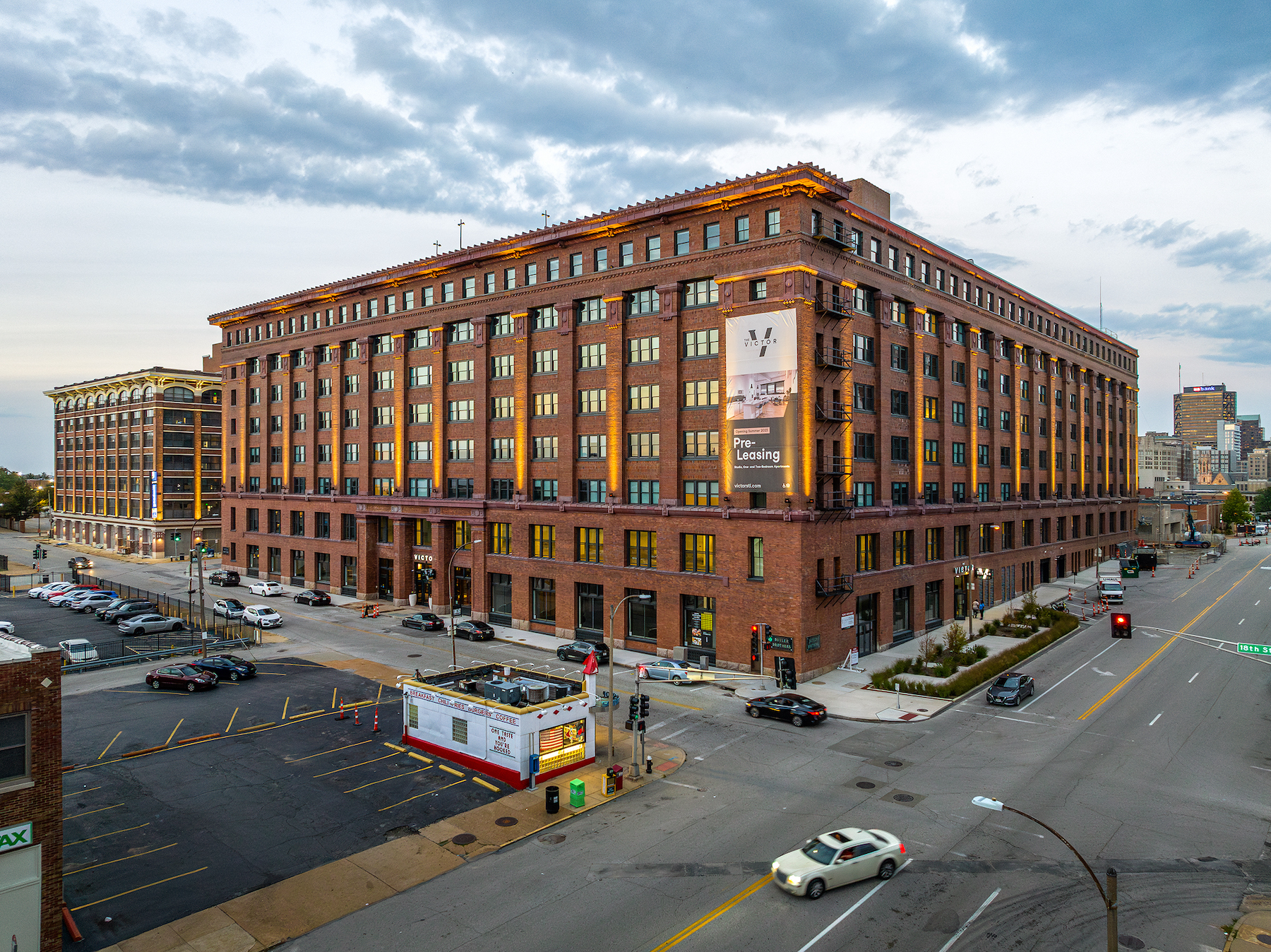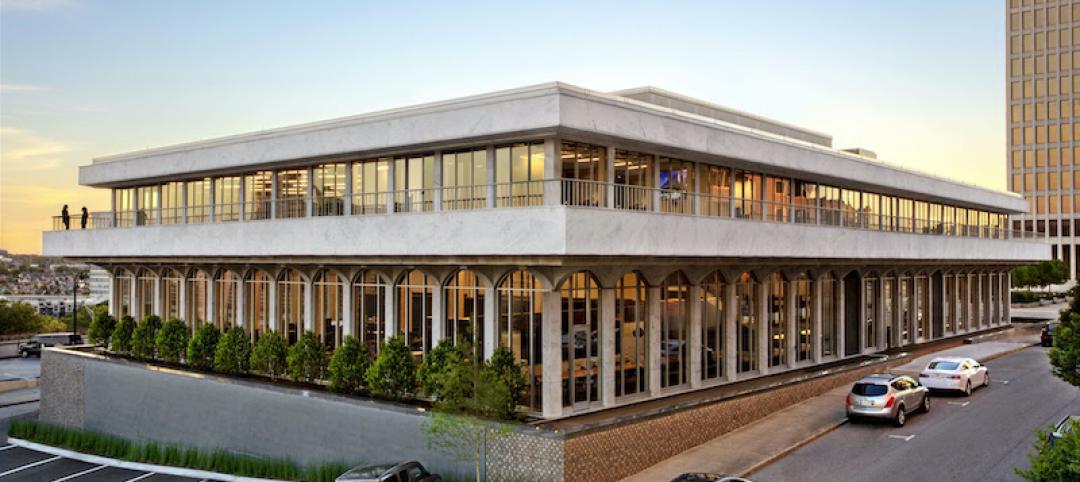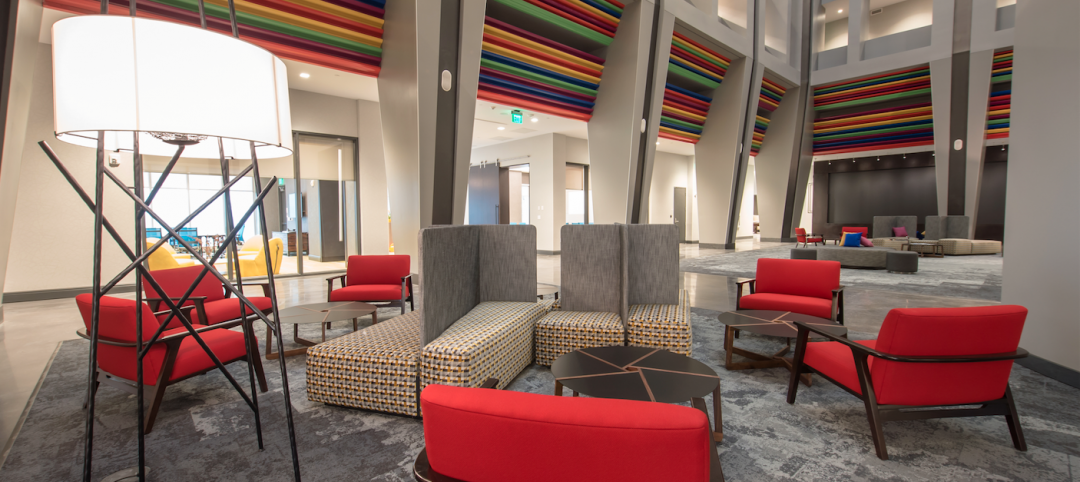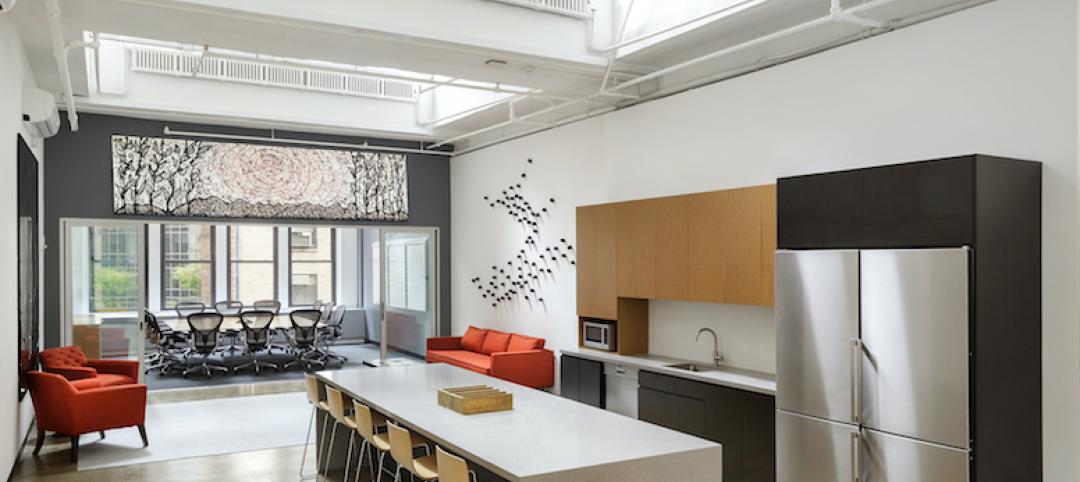The Butler Brothers Building opened in 1906, in St. Louis’s former Garment District. The 735,000-sf building served as a warehouse distribution center, and at the time of its construction was one of the largest reinforced concrete structures west of the Mississippi River.
Last June was the one-year anniversary of the completion of this building’s adaptive reuse transformation as The Victor, a multifamily community with nearly 400 apartments, retail and coworking spaces, and amenities.
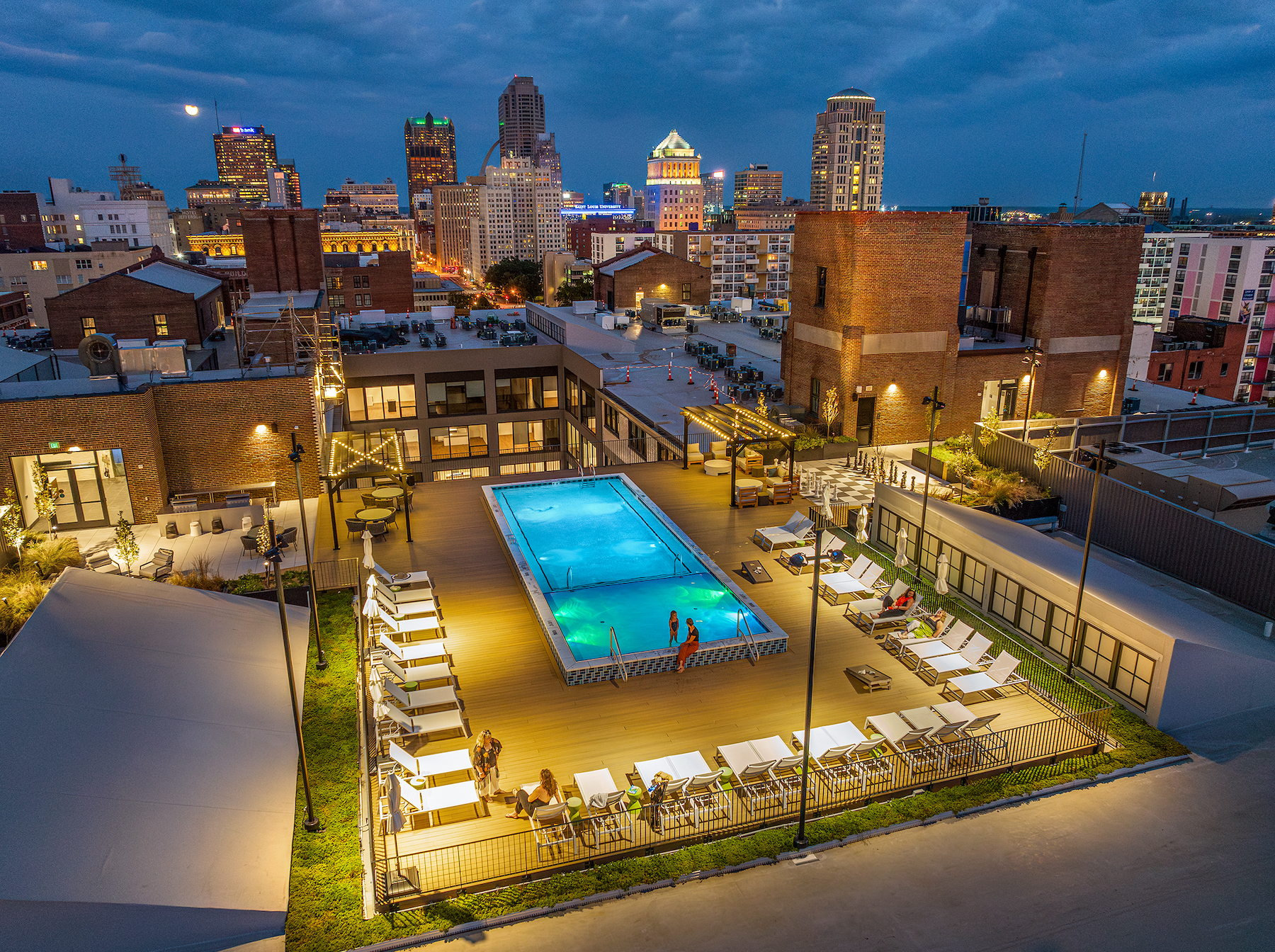
The Victor brought back to life a building that had been vacant for more than two decades, said Joel Fuoss, AIA, LEED AP, a Principal with Trivers, the architect-interior designer on this $130 million project, which was developed by Development Services Group.
Residents of The Victor have access to amenities that include an expansive rooftop terrace with a pool, a pickleball court, sundeck, dog park, fitness center with yoga and Pilates studios and a golf simulator, a parking garage, coworking and conference spaces, and outdoor courtyards. The building itself is located next to St. Louis CITY SC’s CityPark soccer stadium.
The apartments range from a 531-sf studio that starts at $1,345 per month to a 1,384-sf two-bedroom unit starting at $2,578 per month.
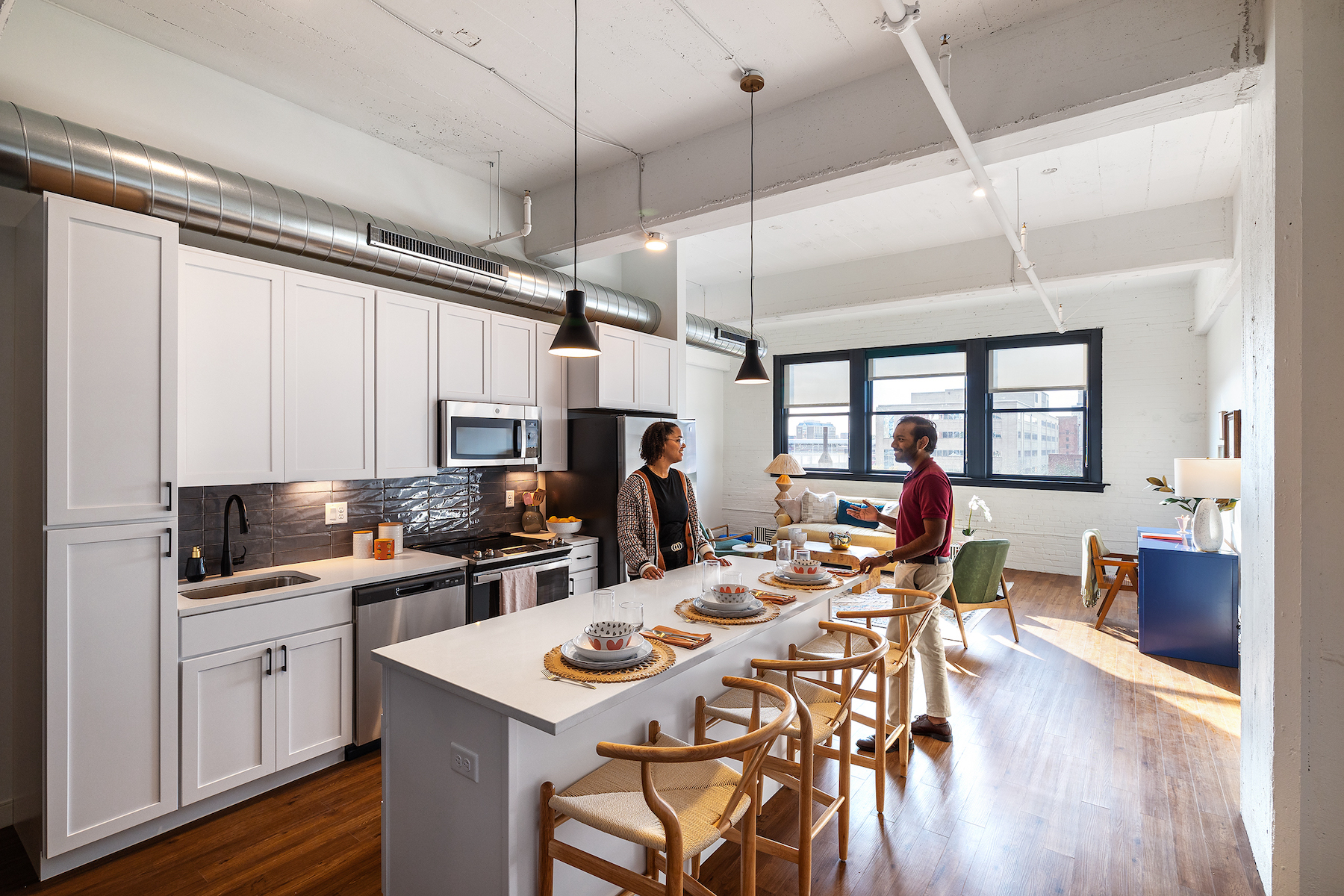
Adaptive reuse respects the past
Trivers and its design team restored the building’s exterior brick to its original color and revitalized the remaining terracotta cornices. The design retained the building’s clam-shell style garage doors that once opened for horse-drawn wagons. The building’s history was also incorporated throughout the interior’s renovation, including patterns and colors from early 20th Century fashion trends, and an oversized chessboard on one of the rooftop lounges that acknowledges the building’s location in a district and the former Harmonie Hall site that hosted the 1886 World Chess Championship.
Gary Prosterman, President and CEO of Development Services Group, said that his company and a team led by members of Trivers and Paric Corp., the project’s general contractor, conducted due diligence on the building a year before construction started to identify and address any problematic issues. “An undertaking this significant would not be p possible without the attention to detail and historic building expertise that the Trivers team brings to the table,” he said.
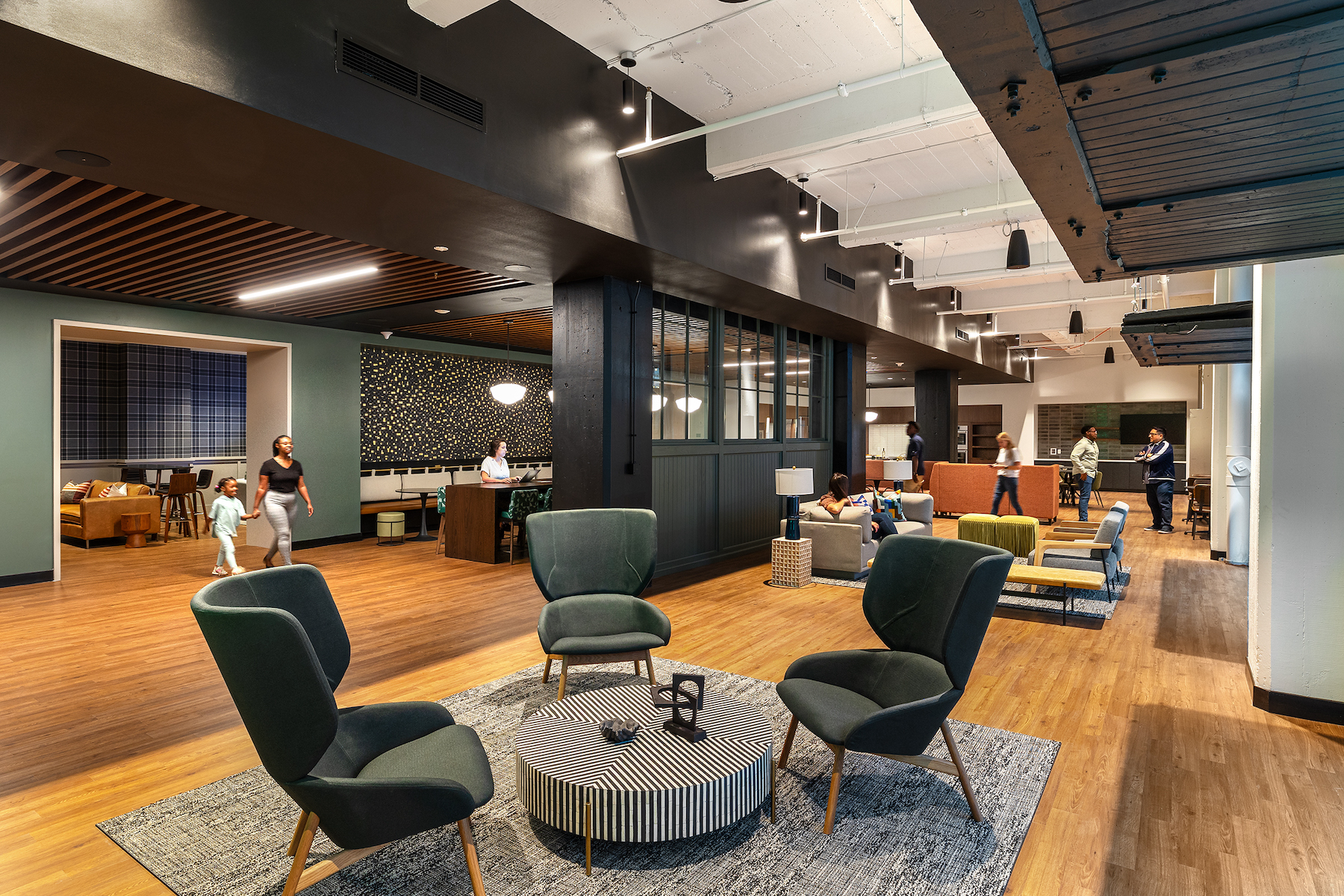
By repurposing the building’s existing concrete and masonry, the building team minimized the need to extract and produce new materials, which are carbon intensive. “The embodied carbon put into this building nearly 120 years ago would take St. Louis’ Forest Park [neighborhood] another 100 years to offset if built today,” said Fuoss.
Other AEC firms on the project team included IMEG (MEP engineer), KPFF Consulting Engineers (SE), Civil Design Inc. (CE), Arbolope Studio (landscape architect), Reed Burkett Lighting Design (lighting designer), Cohen Hilberry Architects (accessibility consultant), and Wollenburg Building Conservation (masonry consultant).
Related Stories
Adaptive Reuse | Oct 22, 2020
A Los Angeles design firm reimagines urban workplaces, multifamily buildings, and warehouses
Omgivning conjures varieties of adaptive-reuse concepts.
Adaptive Reuse | Jul 29, 2020
Two Indianapolis schools find new digs in a long-dormant factory
Adaptive reuse preserved many of the building’s original features.
Coronavirus | May 18, 2020
Will empty hotels provide an answer for affordable housing shortage?
A Los Angeles-based startup sees the Midwest as most fertile for adaptive reuse.
Adaptive Reuse | Feb 25, 2020
Hastings Architecture creates its new HQ from a former Nashville Public Library building
The building was originally constructed in 1965.
Mixed-Use | Jul 18, 2019
POST Houston mixed-use development will include a five-acre “skylawn”
OMA is designing the project.
Multifamily Housing | Jun 17, 2019
Boston multifamily development combines a historic warehouse with a new, modern addition
The Architectural Team designed the project.
Adaptive Reuse | Jun 11, 2019
The power and possibility of adaptive reuse
Building reuse generally offers greater environmental savings than demolition or new construction.
Adaptive Reuse | Jul 9, 2018
Work, park, live: Inside Cincinnati’s parking garage turned lifestyle hotel
The Summit hotel and conference center is a converted parking garage that was once a factory.
Office Buildings | Jun 6, 2018
Final Cut: Jupiter Entertainment’s new production studio in New York combines office and editing spaces
The project team completed this full-floor renovation in four months.
Adaptive Reuse | Jun 4, 2018
Pop-up retail market on Chicago’s Randolph Street will be made of repurposed shipping containers
Related Midwest will open the market at 725 W. Randolph St. later this week.



